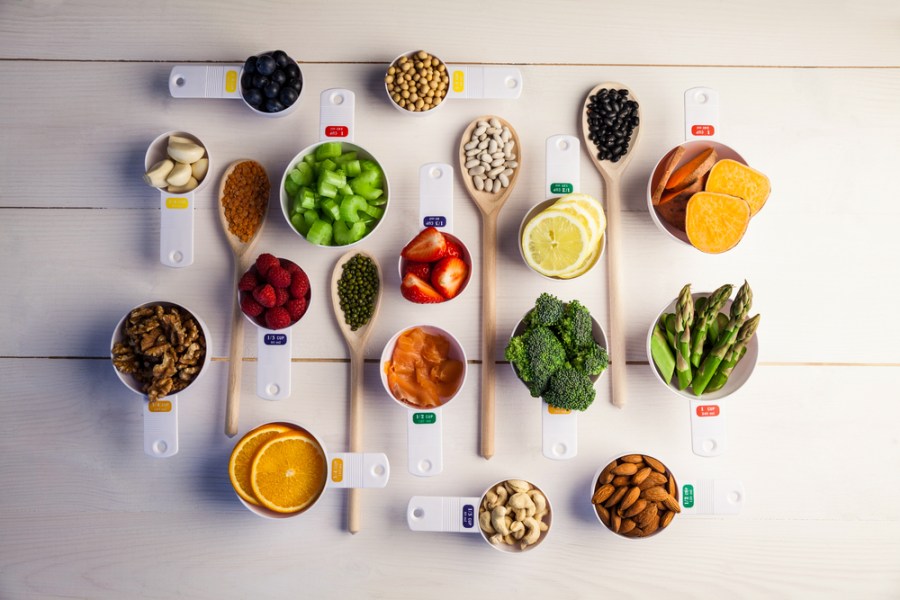Portion Control: Top Visual Cues To Help You Remember

Top Ten Tips To Prevent Injury While Exercising
May 29, 2020
Ten habits Of Healthy People
June 2, 2020You cannot undergo any weight loss journey without learning portion control. Any programs that sell you anything asides that are lying to you. Food portion sizes matter.
The primary cause of weight loss is a calorie deficit, which means you need to watch the portions of food you consume. But measuring your food before eating can be a bit tedious and unrealistic. After all, you cannot exactly carry around measuring cups or weighing scales in your bag. That’s overboard.
So, how do you the right portions of food to eat without having to measure? The solution is knowing visual cues and learning how to gauge portion sizes by sight.
When you know the right sizes to compare your food portions with, it becomes easier to calculate what your meal should constitute. Of course, this is not as accurate as using precise measurements, but it will give you an estimate to remain on track.
Visual Cues To Help You With Portion Control
Proteins
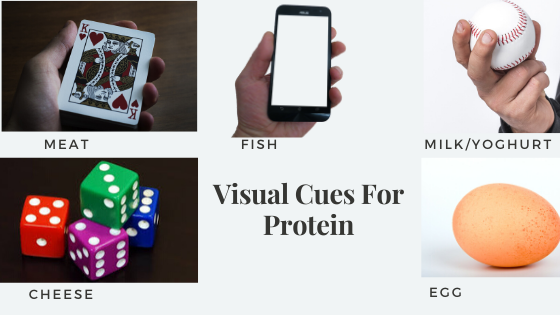
A lot of us think that we need a lot of proteins to balance out the carbs we eat. But, the truth is that we eat more than enough proteins in our food each day. One portion of meat is about the size of a deck of cards or a small smartphone; some of us already eat twice that amount for one meal.
READ: The Number One Secret Ingredient For Weight Loss Meal Plans
Nuts
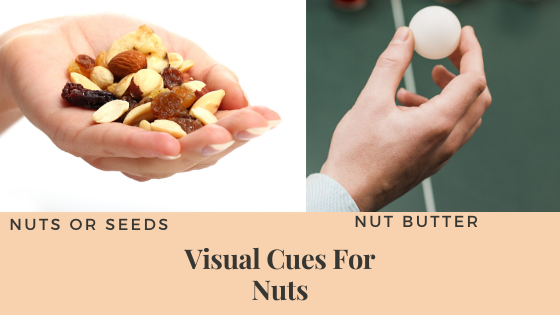
Nuts are an excellent choice for snacking, especially on any weight loss journey. They fill you up and give you healthy fats. There’s just one problem. Nuts contain a high amount of calories, so overindulging will only sabotage efforts that you’ve made towards weight loss. If you have to snack on nuts, make sure to eat only the amount that can fit into a standard shot glass (one handful). If you want to eat nut butter, like peanut butter, a single portion should be the size of a ping-pong ball.
Starches and Grains
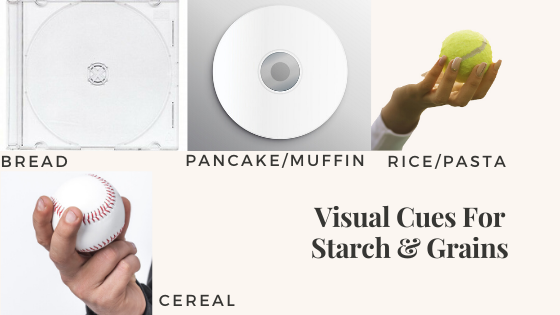
Here’s where we are going to have a little problem – we consume too much starch and grains. You don’t have to heap a small mountain-sized portion of rice to have a full meal. That small mountain has 6-7 servings of what should be your regular portion. That’s too much. One portion of rice, pasta, or swallow should be the size of a tennis ball. One pancake should be the size of a CD; the portion cereal of cereal should be the size of a baseball, not half the cereal pack. One portion of bread should be the size of a CD case.
Fruits and Vegetables
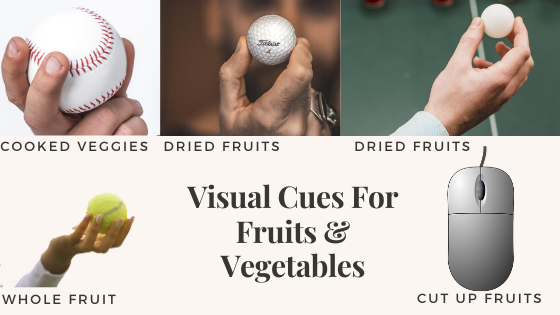
Fruits are good. They give you vitamins and minerals and boost your immune system. But too much of a good thing can also be a bad thing as fruits are a primary source of sugar. Too much sugar equals bad; therefore, too many fruits equal bad. Keep your whole fruit portions to about the size of a tennis ball. If you are cutting up your fruits, it should be the size of a computer mouse. Dried fruits should be the size of a golf ball. A portion of cooked vegetables should be the size of a baseball. A portion of raw vegetables should be the size of two baseballs.
Fats
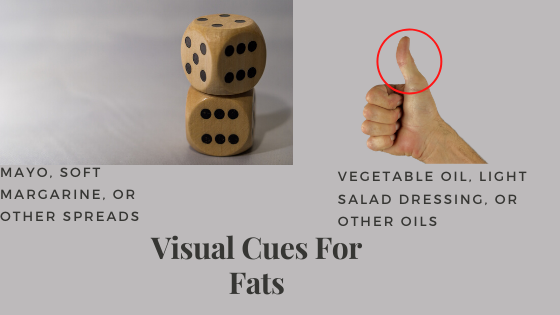
Fats are an essential part of our diet. Unfortunately, their high-calorie content gives them a bad name. However, we cannot do without our healthy fats and fatty acids. Control your solid fat intake (butter, margarine, mayo, and other spreads) by picturing two stacked dice as portion size. Oils should be the size of your thumb.
Although visual cues make portion control easier, it might take time before you adjust to it. You can create a “portion control cheat sheet” that you can carry around. Write the foods you are most likely to eat and the corresponding visual cues. It helps you remember your cues until they become second nature.
You can stay connected with us on social media for amazing and value-adding content.

